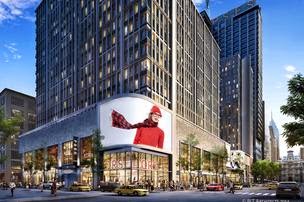 With the first phase of East Market nearing completion, it's about time we starting hearing about the tenants who stand to redefine this long neglected thoroughfare. The massive project is no doubt exciting, and Iron Hill Brewery is slated to anchor part of the ground floor.
With the first phase of East Market nearing completion, it's about time we starting hearing about the tenants who stand to redefine this long neglected thoroughfare. The massive project is no doubt exciting, and Iron Hill Brewery is slated to anchor part of the ground floor. But signage has already appeared on the prime corner location at 11th Street, and it's a SMDH moment that should make everyone scream "this is why we can't have nice things!"
Yes, that's an AT&T store. Bring on the glamour!

















